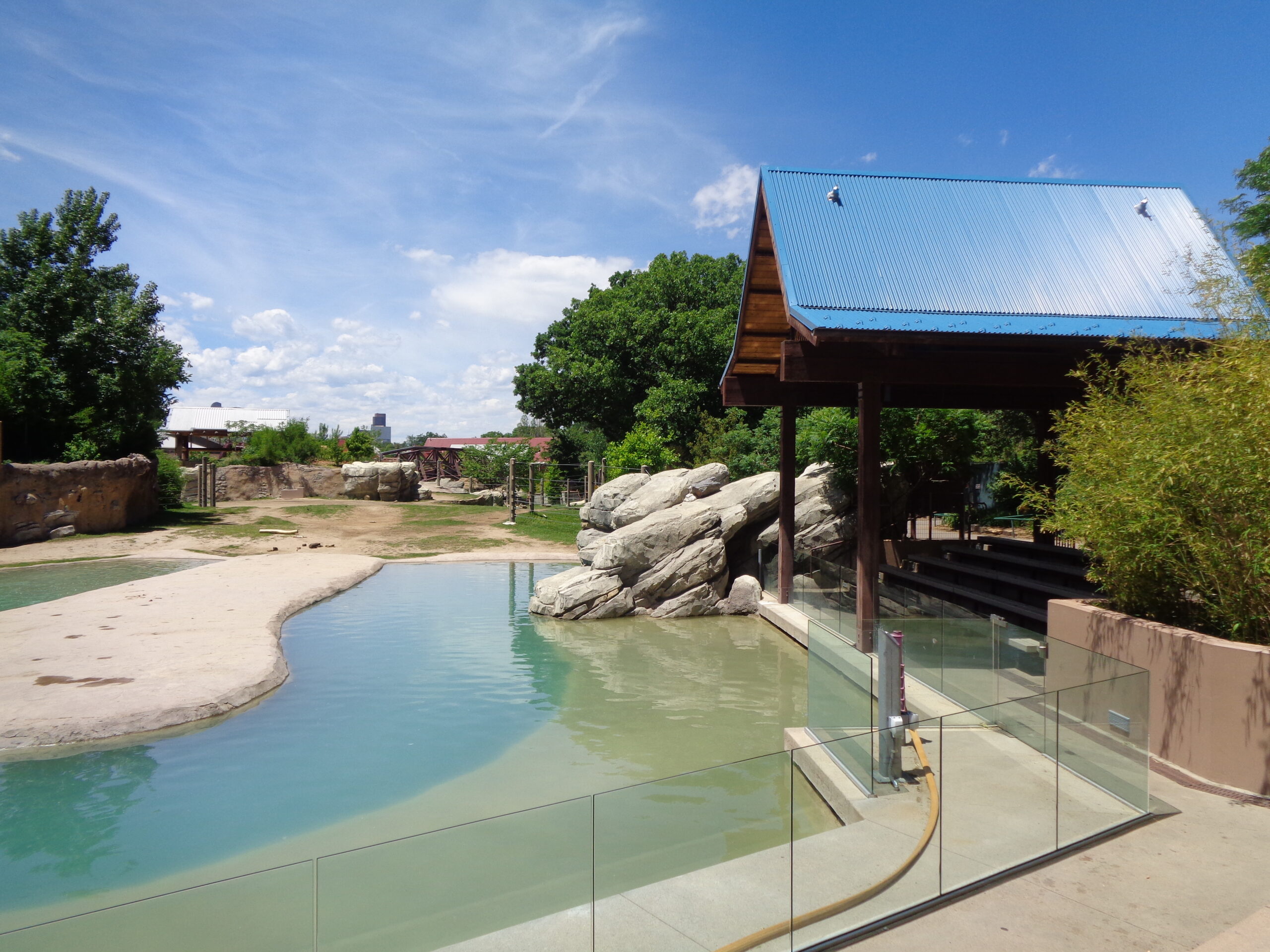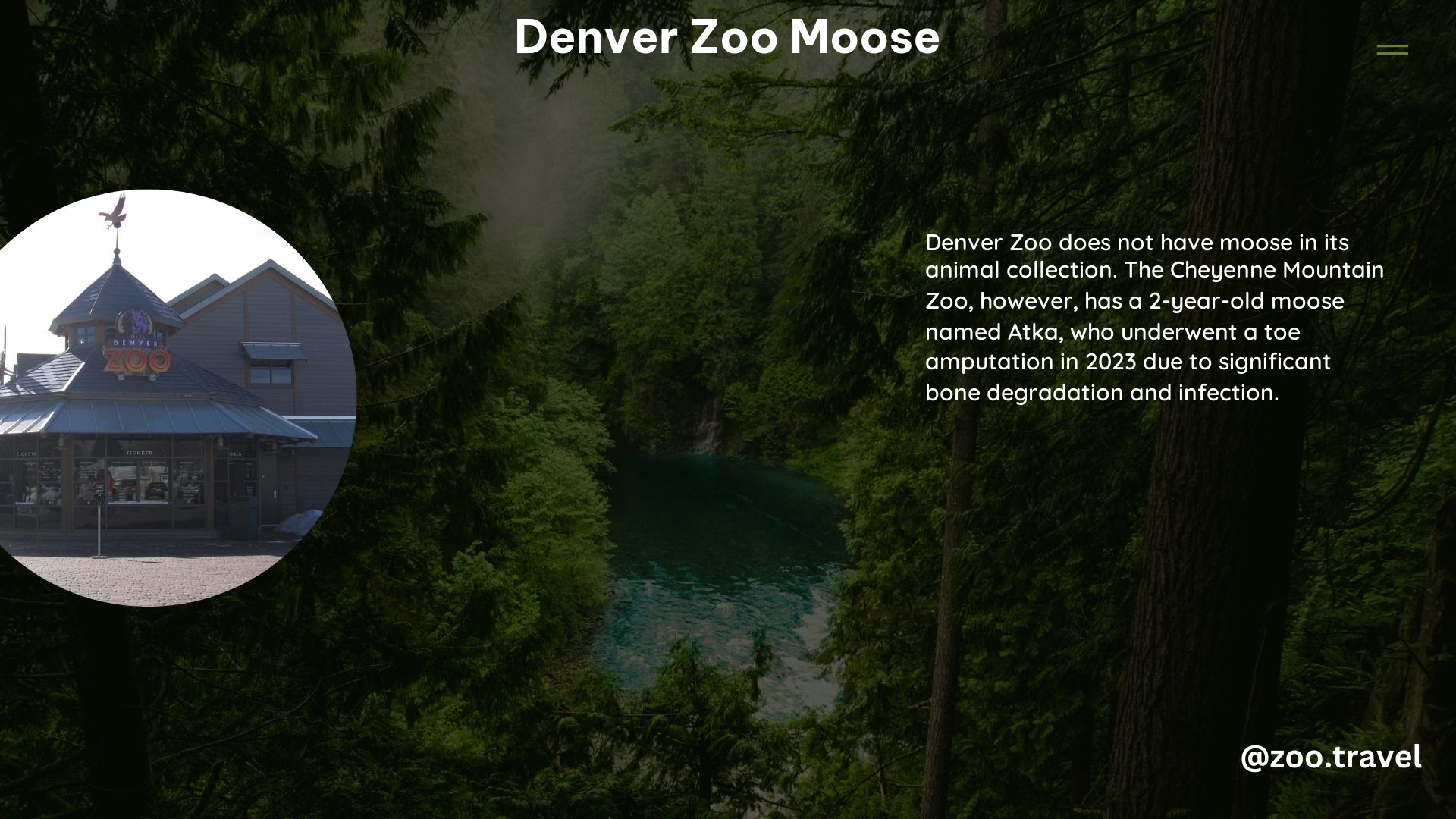Summary

The Denver Zoo is a renowned zoological park located in Denver, Colorado, known for its diverse collection of animals. However, one notable absence from the zoo’s exhibits is the majestic moose. While the Denver Zoo boasts a wide range of species, including primates, birds, reptiles, and fish, the iconic moose is not among the animals visitors can observe. This blog post delves into the reasons behind the lack of a Denver Zoo moose exhibit and explores the unique characteristics of these impressive creatures.
The Absence of Denver Zoo Moose

Despite the Denver Zoo’s extensive collection of animals, the moose is not among the species on display. This absence may come as a surprise to many visitors who expect to see the towering, antlered mammals in a comprehensive zoological park. However, there are several factors that contribute to the lack of a Denver Zoo moose exhibit.
Habitat Considerations
Moose are large, herbivorous mammals that thrive in cooler, forested environments. The climate and terrain of Denver, Colorado, may not be ideally suited for housing and caring for moose. Moose require access to ample vegetation, water sources, and space to roam, which can be challenging to replicate in a zoo setting, especially in a more arid, urban environment like Denver.
Logistical Challenges
Maintaining a healthy and thriving moose population in a zoo setting can present significant logistical challenges. Moose are known to be solitary and territorial animals, making it difficult to house multiple individuals in a confined space. Additionally, the specialized dietary and environmental needs of moose can be resource-intensive for zoos to accommodate, requiring specialized facilities, equipment, and staff expertise.
Conservation Priorities
The Denver Zoo’s focus may be on showcasing species that are more endangered or in need of conservation efforts. While moose are not currently considered endangered, the zoo’s resources and exhibit spaces may be prioritized for species that face more immediate threats to their survival in the wild. This strategic allocation of resources allows the Denver Zoo to contribute to global conservation efforts effectively.
Characteristics of Moose
Despite the absence of moose at the Denver Zoo, it is essential to understand the unique characteristics and behaviors of these impressive animals. Moose are the largest members of the deer family, known for their impressive size, distinctive antlers, and adaptations to their cold-weather habitats.
Physical Attributes
Moose are massive creatures, with adult males (bulls) typically standing over 6 feet tall at the shoulder and weighing up to 1,500 pounds. Their long legs, large bodies, and broad, shovel-like antlers make them instantly recognizable. Moose have a distinctive facial profile, with a long, overhanging snout and small, rounded ears. Their thick, coarse fur helps them withstand the harsh winters of their natural habitats.
Habitat and Behavior
Moose are found in the northern regions of North America, Europe, and Asia, thriving in boreal forests, wetlands, and tundra environments. They are well-adapted to these cold climates, with their large size and insulating fur providing protection from the elements. Moose are primarily solitary animals, with the exception of cows (female moose) and their calves. They are known to be territorial and can be aggressive, especially during the breeding season or when protecting their young.
Dietary Preferences
Moose are herbivores, feeding primarily on a variety of aquatic and terrestrial vegetation. Their diet consists of aquatic plants, such as water lilies and pondweed, as well as terrestrial vegetation, including willow, birch, and aspen trees. Moose have a specialized digestive system that allows them to break down the tough, fibrous plant matter that makes up their diet.
Conservation Status
While moose are not currently considered endangered on a global scale, some populations have faced declines due to factors such as habitat loss, hunting, and climate change. The International Union for Conservation of Nature (IUCN) lists the moose as a species of “Least Concern,” but regional populations may face more significant threats. Conservation efforts focus on maintaining healthy moose populations and protecting their critical habitats.
Moose in Other Zoos
While the Denver Zoo does not have a moose exhibit, many other zoos and wildlife parks around the world do feature these impressive animals. Some notable examples include:
| Zoo | Location | Moose Exhibit |
|---|---|---|
| Alaska Zoo | Anchorage, Alaska | Yes |
| Minnesota Zoo | Apple Valley, Minnesota | Yes |
| Toronto Zoo | Toronto, Ontario | Yes |
| Bronx Zoo | New York City, New York | Yes |
| Assiniboine Park Zoo | Winnipeg, Manitoba | Yes |
These zoos are able to provide the necessary habitat, resources, and care required to house and display moose, often in environments that more closely resemble the animals’ natural habitats.
Conclusion
While the Denver Zoo may not have a moose exhibit, the absence of these majestic creatures does not diminish the zoo’s overall appeal and diversity. The Denver Zoo remains a premier destination for wildlife enthusiasts, offering a wide range of species for visitors to explore and learn about. Although moose may not be part of the Denver Zoo’s collection, understanding the unique characteristics and conservation status of these impressive animals can enhance the overall zoo-going experience.
